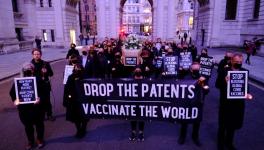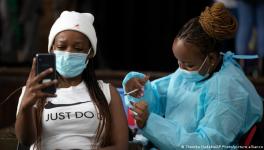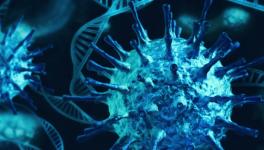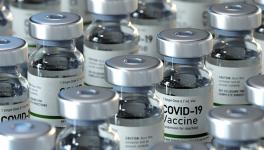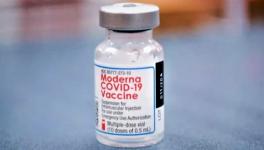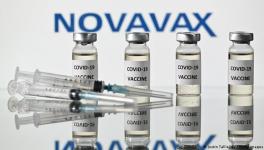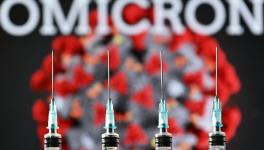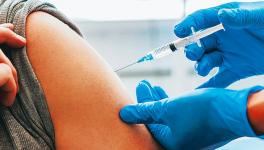Failure of CureVac: How a Highly Anticipated mRNA Vaccine Turned Out to be a Poor Candidate
Besides two of the Messenger RNA (mRNA) vaccines manufactured by Pfizer and Moderna, which are in use and are said to have high efficacy, another highly anticipated candidate was that of CureVac’s mRNA vaccine. The CureVac vaccine candidate, however, has shown poor results in its final stage trial.
According to reports of the trial released on June 16, the vaccine candidate showed to be only 47% effective at preventing the COVID-19 disease. The trial included 40,000 participants who were administered two shots of the vaccine.
CureVac, a Germany based company, was expected to come out with another effective vaccine against COVID. Its mRNA vaccine was expected to be cheaper and last longer in refrigeration in comparison to the vaccines made by Moderna and Pfizer. It was hoped that the vaccine would help low income countries get mRNA vaccines, with many European countries expecting to put orders for millions of doses.
The poor performance at the final stage trial is not simply a disappointment for CureVac, this has also posed questions to scientists -- what actually went wrong with the vaccine?
Understanding the principles, on which the mRNA vaccine manufacturing is based, will in turn help understand what factors scientists are suspecting for the poor show by CureVac’s vaccine.
Unlike many other vaccines that put a weakened or inactivated form of a pathogen (a virus, or a bacteria that can cause disease) into the body, an mRNA vaccine teaches the body to make a protein of the pathogen. This kind of vaccine puts the mRNA as just necessary to make a certain protein.
Proteins are produced in the cells with a directive present in the genetic material, be it a DNA or RNA. In case of humans, the genetic material DNA consists of codes for a particular protein. That code is translated to a protein. however, taking the code from a DNA and translating it to a protein requires an intermediate, which is mRNA. In simple words, the code at the DNA is transcribed to an mRNA and eventually, the mRNA translates that code to a protein.
In case of the coronavirus, which does not have DNA, rather contains RNA as its genetic material, the code for a protein is inscribed in the RNA itself.
For mRNA vaccines against the coronavirus, scientists use a bit of the mRNA having the code for the spike protein. The spike protein of the coronavirus is essential for the virus to enter human cells. When the mRNA is administered into human cells (via the vaccine), then the mRNA (having the code for the spike protein) gets translated by machineries of human cells into the viral spike protein. The immune system (or the defense mechanism against any foreign object inside the body) reads the spike protein as a foreign object and builds up immunity against it.
Now, coming back to problems with CureVac’s vaccine candidate, there are certain possible factors that scientists have enumerated.
Problem with New Variants:
The coronavirus has been mutating and we now know about several strains; for example, the alpha, beta, delta and the lambda variants. The lambda variant (first detected in Peru) is circulating in ten countries across Europe and Latin America where the trial by CureVac was conducted. The scientist involved in the trials sequenced the virus in 124 participants who got infected. They found 13 different variants of the coronavirus among those 124 participants. Only 1% of the infected people was found to have been infected by the variant of the virus whose spike protein matched with the mRNA used in the vaccine.
Franz Werner Haas, the CEO of CureVac, was quoted as saying, “We are virtually fighting a different virus, different pandemic over the last 6 months.”
“Demonstrating high efficacy in this unprecedented broad diversity of variants is quite challenging,” he added.
However, other mRNA vaccines have been found to work fairly well against the variants.
Issue with Doses:
According to Peter Kremsner, an infectious-disease specialist at Tubingen University hospital and the person leading CureVac’s clinical studies, the dose of the vaccine is the main culprit for its poor performance.
During the phase I trial, the dose administered ranged from 12 to 20 micrograms of mRNA per shot. This was a high dose and participants were reported to have shown too many side effects.
At a dose 12 micrograms, the vaccine was found to be more tolerable and the recipients developed antibodies that prevented the virus from entering the cell. However, the neutralising antibodies (that kills the virus) were found to be generated at a low level with this dose. When the doses were further lowered, the antibody levels also came down, which was an early sign of a poor performance.
Here arises the question why the vaccine could not be given at higher doses, like that of Pfizer and Moderna. The probable factor was thought to be the medium used in the vaccine through which the mRNA is administered. CureVac and Pfizer use the same medium.
Then scientists suspect the other possible factor, that is the mRNA itself.
Modified mRNA:
Pfizer and Moderna vaccines use a modified version of the mRNA, whereas CureVac uses the natural mRNA. Both Pfizer and Moderna chemically altered one of the nucleotides in the mRNA that codes for the spike protein. They modified the uracil nucleotide.
Nucleotides are the building blocks of both RNA and DNA. Long chains of the nucleotides form the DNA or RNA. DNA is made up of four nucleotides, with symbols A,T,C and G. The RNA is also made up of four nucleotides, but having a difference with the DNA, it has A,U,C and G.
When natural mRNA is administered into the body, it induces interferon, a type of protein involved in the immune system. Interferons can block the generation of helper T cells. The T cells are immune cells of having multitude of important roles. The helper T cells direct another type of immune cell, the B cells, to produce antibodies.
Modified mRNA could have played an important role in the poor performance of the CureVac vaccine, according to many scientists. There could also be some other issues like the elevated temperature for the storage of the jab, which could have accelerated the break down of the mRNA in the vials consisting the vaccine. The presence of impurities during manufacturing of the virus can also have awkward effects.
With all these possibilities, the matter, however, is still open for further investigation.
Get the latest reports & analysis with people's perspective on Protests, movements & deep analytical videos, discussions of the current affairs in your Telegram app. Subscribe to NewsClick's Telegram channel & get Real-Time updates on stories, as they get published on our website.









